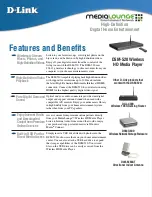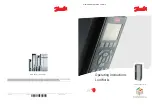
31
Chapter 4
Basic Operating Procedures for Converter
4.1.
Checks before Starting Operation
4.1.1.
About the Control Mode
The VF66R converter provides two control modes: PWM sine wave mode and 120-degree conduction mode.
You can check which mode is selected with the console display at power-on or setting item: <n-00>.
The console display shows "VF66r" for the PWM sine wave mode or "Vr120" for the 120-degree conduction mode.
(Note) Normally, the unit is shipped with the control mode specified by order.
Notes
・
Note that the AC reactor used in the PWM sine wave mode is different from that used in the 120-degree conduction
mode.
・
The PWM sine wave mode uses a filter capacitor, whereas the 120-degree conduction mode does not. Keep this
in mind.
・
With the PWM sine wave mode selected, the terminal MI3 on the terminal block TB1 on the control board <VFC66R-Z>
needs to be input. If the terminal MI3 is not input with the PWM sine wave mode selected, the converter cannot
be operated. Conversely, if the terminal MI3 is input with the 120-degree conduction mode selected, the
converter cannot be operated. Keep this in mind.
4.1.2.
Minimum Parameter Settings
1. Power supply frequency
Set via the basic setting item "2.FrEq."
2. Electric constant of filter
To use the unit in the PWM sine wave mode, check that the constants of the AC reactor and filter capacitor
(specified by Toyo Denki) connected to the VF66R converter are correctly set in the items: <A-00> and <A-01>
in the setting area. (The values of the AC reactor and filter capacitor specified by Toyo Denki are set
at the time of the control board <VFC66R-Z> initialization.)
Be sure to use the AC reactor and filter capacitor specified by Toyo Denki.
4.1.3.
Replacing Control Board <VFC66R-Z> with Spare
To make a spare compatible with the currently used converter, gain adjustments of analog circuits, such as
converter capacity and DC voltage detection part are necessary.
















































